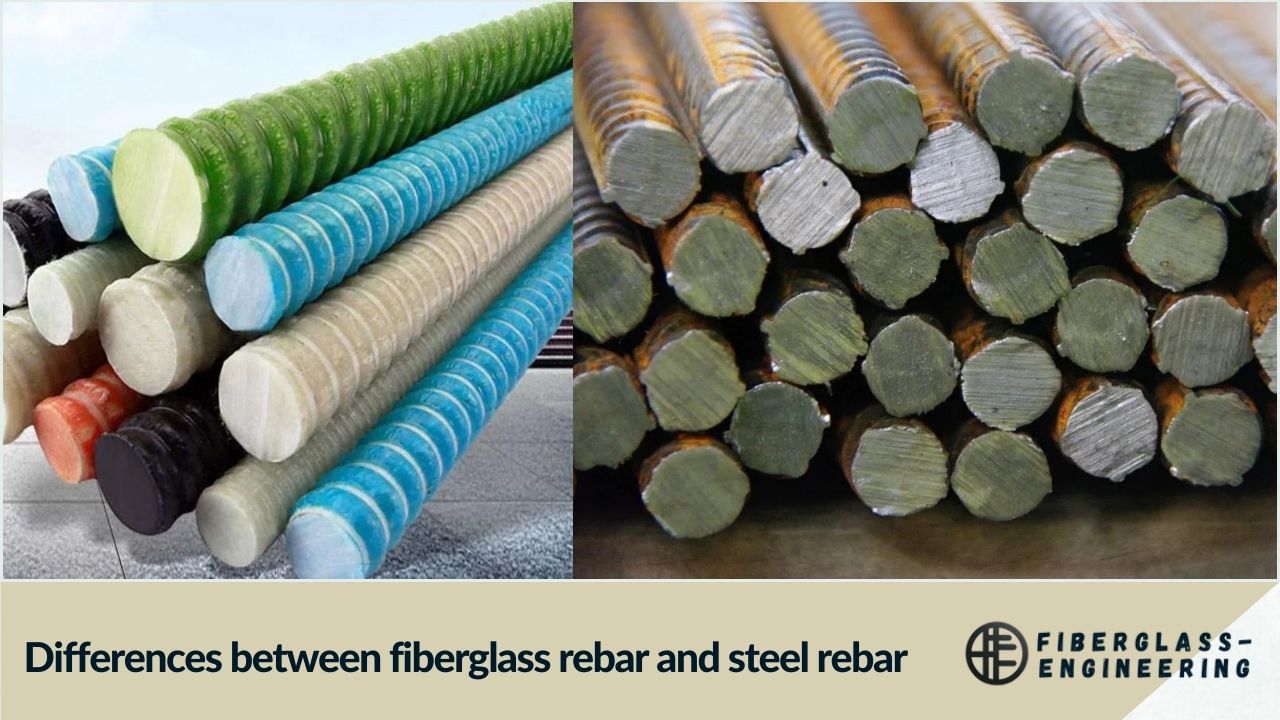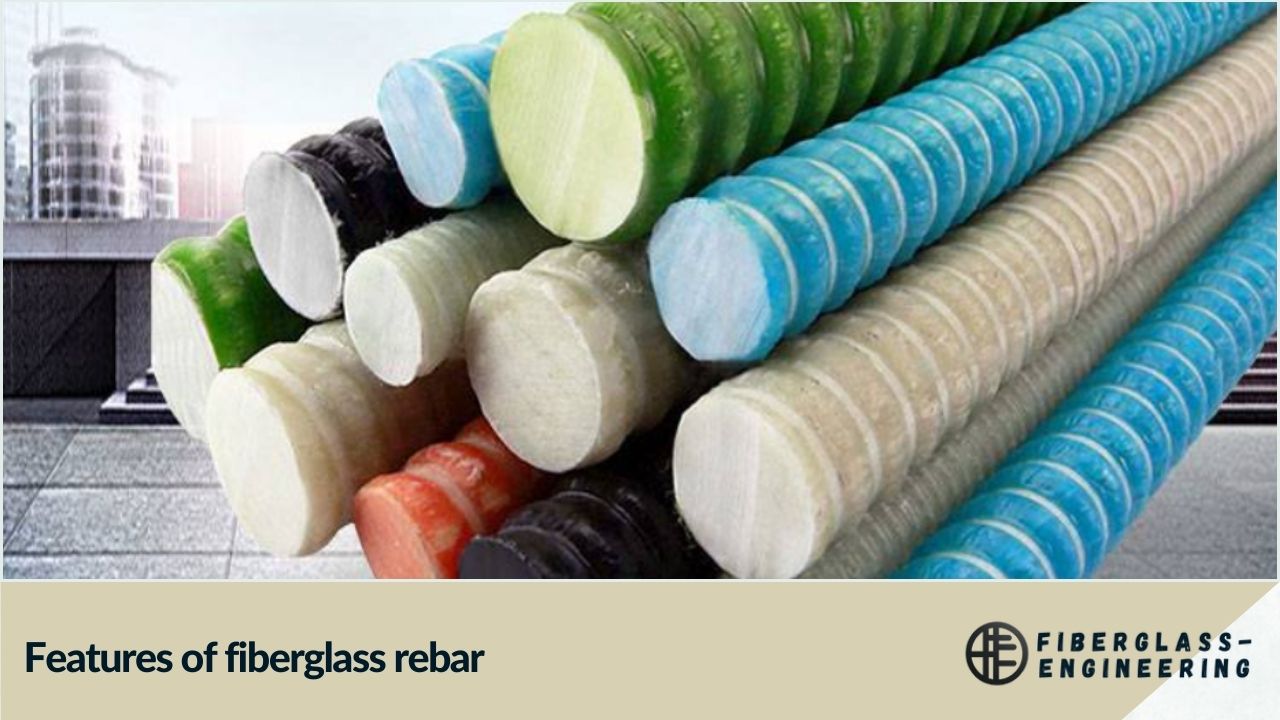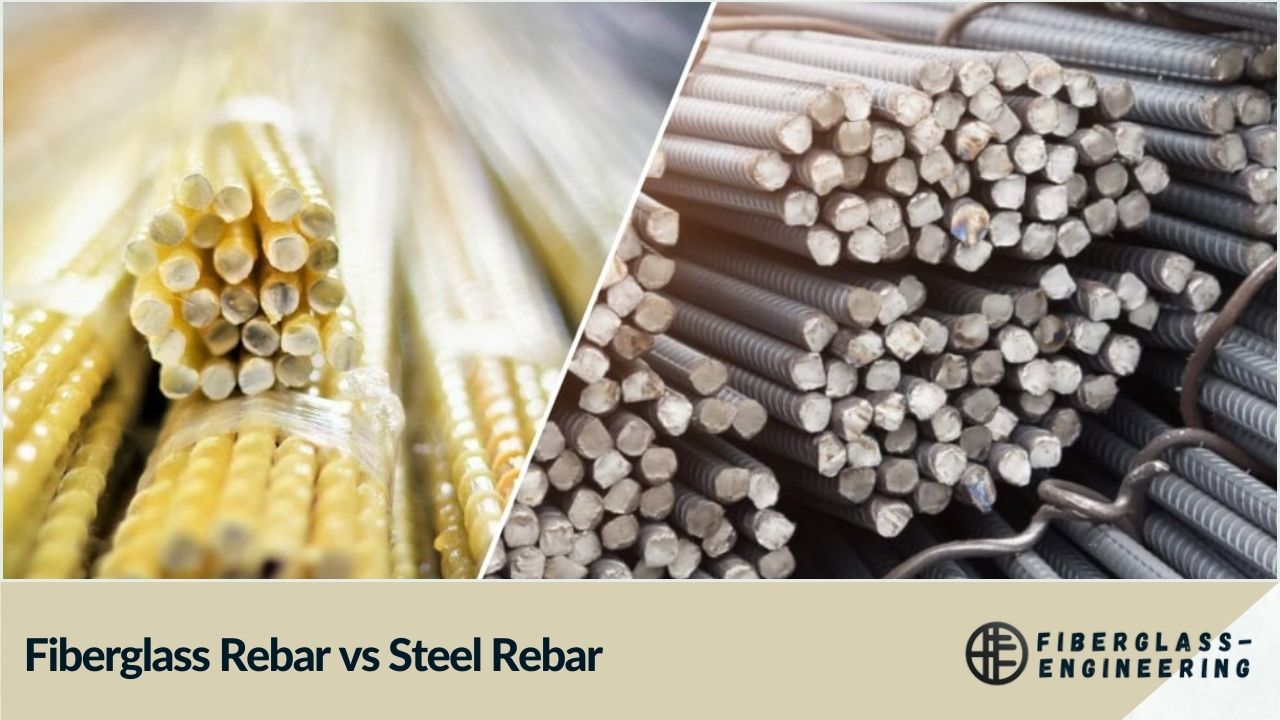GFRP rebar, also referred to as fiberglass rebar, represents an innovative composite material. This product, often encountered for the first time by numerous customers, presents a mystery in how it differs from traditional steel rebar. What benefits does fiberglass rebar offer? We aim to explore the pros and cons of both fiberglass and steel rebar. Through this examination, we'll assess whether fiberglass rebar has the potential to substitute steel rebar.
What is the composition of fiberglass?
Fiberglass, recognized as a cutting-edge structural material, finds extensive applications across a variety of sectors. Its use spans subway tunnels, including shields, bridges, highways, harbors, airports, stations, water management initiatives, underground projects, and areas prone to corrosion like electrolyzers, manhole covers, and coastal defense undertakings. By addressing several engineering challenges, fiberglass rods provide solutions that traditional steel cannot, paving the way for novel advancements in civil and construction engineering.
Comparison of ordinary rebar and fiberglass rebar
Ordinary rebar and fiberglass rebar each come with their own set of strengths and weaknesses. Fiberglass rebar boasts a carrying and tensile strength that is double that of equivalent threaded steel bars, yet its weight is just a quarter of that of steel bars. Its elastic modulus remains steady, being roughly 1/3 to 2/5 that of steel bars. Additionally, it provides electrical and thermal insulation, with a thermal expansion coefficient more akin to cement than steel. It's highly resistant to corrosion, making it ideal for use in moist or corrosive settings such as water projects, bridges, harbors, and tunnels. However, its shear strength is relatively low, with ordinary glass fiber bars possessing a shear strength of only 50~60MPa, though they offer superior cutting ease. Comparable in many ways to steel bars, it adheres well to concrete, combining high tensile strength with low shear strength, allowing for straightforward cutting by composite shield machines without risking damage to tools.
Differences between fiberglass rebar and steel rebar
The distinctions between fiberglass rebar and steel rebar are significant, particularly in construction timelines, complexity, safety, and cost-efficiency. Fiberglass rebar, unlike conventional steel bars, requires manufacturer customization due to the inability for on-site alteration, demanding precise measurements to avoid construction delays. This material is pre-shaped, simplifying the reinforcement process by eliminating steel processing steps and replacing welding with a lap joint method, thus speeding up the assembly of the reinforcement cage.

In terms of construction challenges, the flexural and shear capacity of fiberglass differs markedly from that of steel, and its lighter weight compromises the stability of the reinforcement cage during handling and concrete pouring, potentially leading to disarray. This necessitates careful management during the production and lifting of the cages.
Regarding safety, the use of fiberglass rebar allows the shield machine to directly penetrate the reinforced cage diaphragm wall without the need to break it, mitigating risks such as mud, water, and sand eruptions. This approach not only saves on the costs associated with breaking the diaphragm wall but also reduces environmental pollutants like dust and noise.
From an economic perspective, the lighter weight of fiberglass rebar and the reduced need for directional changes lower the costs associated with fabricating and installing reinforcement cages. Additionally, the larger size of the fiberglass cage diminishes the width required for the diaphragm wall and the labor involved in its construction, saving on materials such as steel beams or locking tubes and thus further reducing expenses.
Features of fiberglass rebar
High tensile strength is a key characteristic, with fiberglass bars surpassing the strength of conventional steel bars by 20%, providing superior fatigue resistance. These bars are significantly lighter, weighing only a quarter of their steel counterparts, with a density ranging between 1.5 and 1.9 (g/cm3). They exhibit exceptional resistance to corrosion from acids, alkalis, chloride ions, and solutions with low pH values, making them particularly resilient against carbon and chlorine compound corrosion.

The bond between fiberglass rebar and concrete is notably strong due to the thermal expansion coefficient of fiberglass being more similar to cement than to steel. This ensures a robust connection. Furthermore, fiberglass rebar is highly customizable. Its stable elastic modulus and resistance to thermal stress allow for easy shaping into bends and other forms, ensuring high safety standards without the risk of sparking upon impact.
Its non-magnetic nature makes fiberglass rebar ideal for use in areas requiring non-magnetic or electromagnetic compatibility, as it allows for magnetic wave permeation without the need for demagnetization. Construction convenience is another advantage; fiberglass bars can be manufactured in a variety of sections and lengths, both standard and non-standard, according to user needs. On-site binding is simplified through the use of non-metal tensioning belts, facilitating ease of operation. When purchasing fiberglass in bulk, it's crucial to opt for reputable manufacturers to ensure quality.
Is fiberglass rebar more expensive or rebar?
When comparing the costs of φ12 fiberglass rebar and steel rebar, fiberglass rebar is priced over 10,000 per ton for 5,000 meters, whereas steel rebar costs more than 4,000 per ton for 1,100 meters. If evaluating by meter, fiberglass rebar emerges as the more cost-effective option; however, when assessed by tonnage, steel rebar appears less expensive. Market trends indicate that fiberglass rebar is slightly pricier than its steel counterpart. Yet, it offers the advantage of reducing the cost associated with breaking through reinforced concrete diaphragm walls for shield tunnel entry and exit by approximately 30,000 yuan. Overall, employing fiberglass rebar can lower costs to some extent. Additionally, using fiberglass for diaphragm walls diminishes safety hazards like mud, sand, and water eruptions during reinforced concrete diaphragm wall construction, shortening the timeline by 7-10 days.
This overview highlights the benefits and drawbacks of fiberglass rebar versus steel rebar. As an advanced high-performance structural material, fiberglass rebar is extensively utilized in a range of projects including subway (shield) tunnels, highways, bridges, airports, harbors, stations, water management undertakings, and underground constructions. It is especially suited for corrosive environments such as wastewater treatment facilities, chemical plants, electrolyzers, manhole covers, and coastal defense works. By addressing various engineering challenges, fiberglass rebar compensates for the limitations of traditional steel, ushering in new prospects for civil and construction engineering.
You can review our article How to Make a Simple Fiberglass Mold to resolve all the questions you have in your mind with fiberglass mold making.

